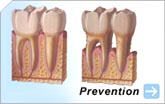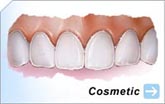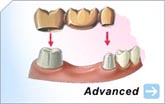 |
 |
 |
|
So Where's The Silver Lining? by Scott Kiser, DDS |
||
|
Baby boomers beware! What you have been told all these years about silver fillings may not be all they are cracked up to be. Truth is, it may be time to retire those old silver fillings, also known as amalgams. Post WWII children grew up in an era in which there was a high consumption of sugar-laden foods. Foods like your favorite cereal, sodas, candy bars and desserts. The amount of sugar filled foods for that generation and the current generation is staggering. Additionally, during this period the tooth strengthening benefits of fluoridated water were still undiscovered. These two factors combined were a major contributing factor to reception rooms of every dentist office in America overflowing with unsuspecting patients. Unsuspecting in that the solution dentistry provided for all of these teeth pitted with cavities and resembling the surface of the moon was an inexpensive silver tooth patch invented in 1894. Most people were led to believe that silver fillings were actually good for them. Unfortunately, when the dentist patted you on the head, sent you on your way with your lip hanging off of your face and a shiny toy ring in your pocket, he or she failed to tell you, "Oh by the way, your shiny new teeth are packed with mercury and they are going to wear out someday. Only next time there won't be a pretty ring in your pocket, just a hefty bill." Why Do Fillings wear Out? Several factors cause the demise of amalgam restoration. Size, personal hygiene, and diet seem to have the greatest influence on their life expectancy. When a tooth is filled, amalgam is packed into a hole created by bacteria and your dentist's drill. The bigger the hole, the larger the filling used to repair the damage is and the weaker a tooth becomes. Weaker teeth are doomed to fracture because a large filling acts like a wedge, similar to a wedge used to split firewood. Chewing even soft foods wears the surface of each filling and intensifies the wedging. Hard foods like Corn Nuts and ice wreak havoc on your teeth and should be completely avoided. Acids found in citrus products, coffee, cola products, and foods containing sugar cause the surface of the filling to become rusted and pitted, like a rusty old tin can. The Truth About Mercury There are two primary areas to consider regarding mercury. One is how pliable a material it is. The other is how toxic it is. Mercury is placed in thermometers for a reason; it is very sensitive to temperature change. Even a two degree difference will register on a thermometer due to the mercury expanding. With mercury being as much as 55% of the substance in an amalgam filling, imagine what that is doing to your tooth structure. Incredibly it seems that temperature fluctuation in the foods we eat cause the most dramatic breakdown effects in the teeth. When we eat hot or cold foods our fillings expand and contract more than the teeth they are placed inside. Since these fillings are packed tightly into the tooth there is absolutely no room for change. A can of soda pop placed in a freezer provides an example of two materials expanding at different rates, left long enough and it will explode. Although not as dramatic, the pressures associated with changing mouth temperatures does create microscopic fractures in your teeth, similar to cracks in the windshield of a car. These cracks continue to grow and provide a convenient hiding place for cavity causing bacteria. Even the best brushing and flossing techniques are little match for this type of cavity, and left untreated they can cause large portions of your tooth to break. Many people don't realize that the mercury in your silver fillings just happens to be number two on the list of the most toxic elements known to man. In California all Amalgam manufacturers, as of December 1993, must display the following warning:
Warning! This Office uses amalgam filling materials, which contain and expose you to Mercury, a chemical known to the state of California to cause birth defects and other reproductive harm. Please consult your dentist for more information. Some countries have actually banned the use of mercury altogether. In the United States dentists cannot just throw old mercury down the sink. They have to treat it like the toxic waste it is. Treatment Options Fortunately there are now alternatives to silver fillings. New types of replacements have revolutionized dental care. Tooth colored restorations made out of porcelain or plastic can be safely bonded (glued) into place creating a much stronger and more stress resistant chewing surface. However, there is a downside. Be prepared to pay a little more for these types of restorations because the materials used are more expensive and more difficult for your dentist to place. Also, don't be surprised if your insurance company saddles you with more of the share of the additional fees. It may take years for them to discover how long term benefits of bonded fillings outweigh the increase of up front costs. The question you must ask yourself in any health decision you make is, "What is my health worth?" Your answer will help you find your own silver lining while maintaining a safe, healthy and beautiful smile. About The Author Dr. Scott Kiser has been practicing general dentistry in Salt Lake City, Utah for over 20 years. Dr. Kiser has used only mercury-free substances in his treatments since the mid 90s and concentrates his practice in the areas of sedation dentistry and complete smile makeovers. Consumer Research Council of America selected him as Utah's Top Cosmetic Dentist of 2003-04.
|